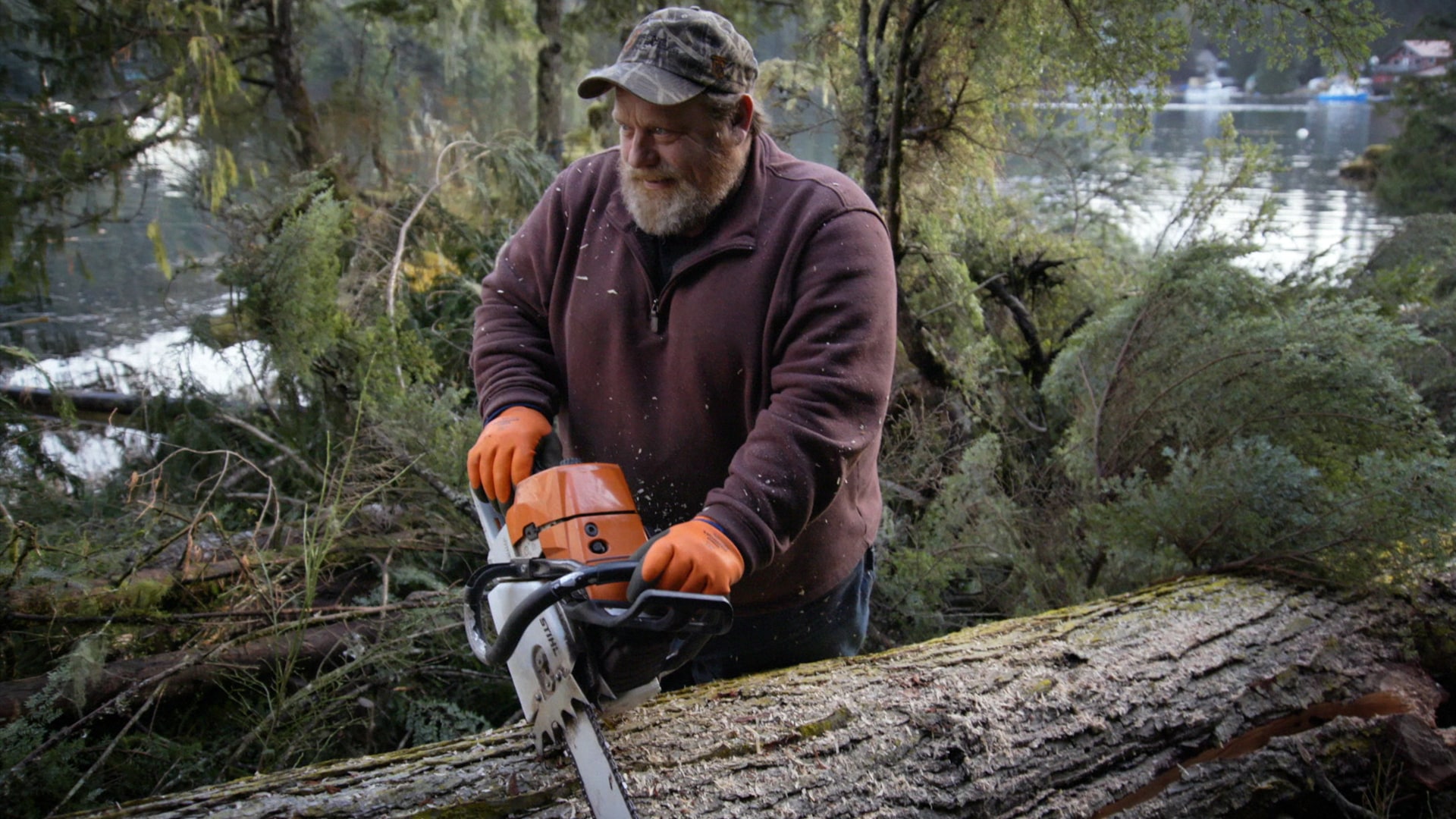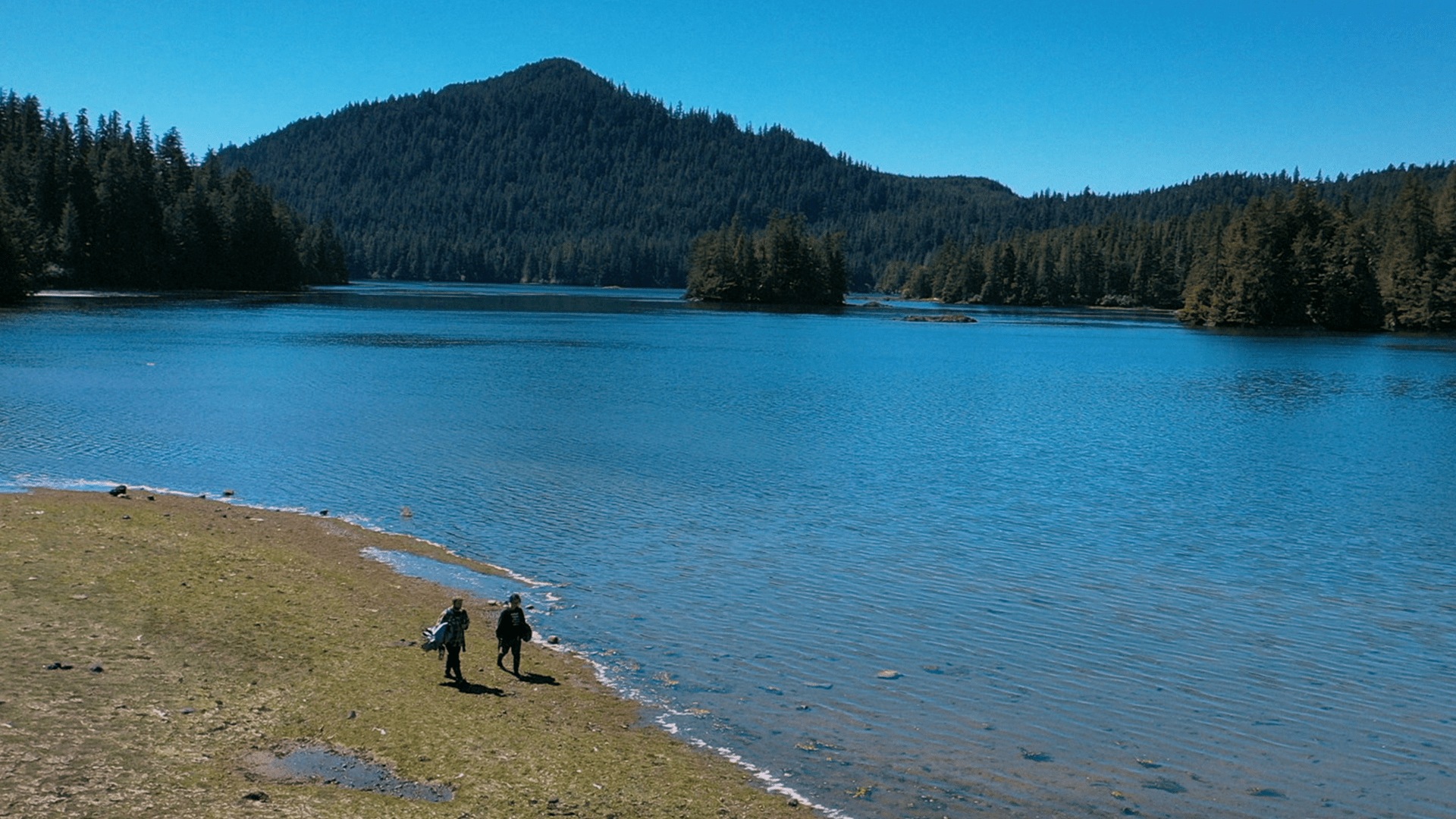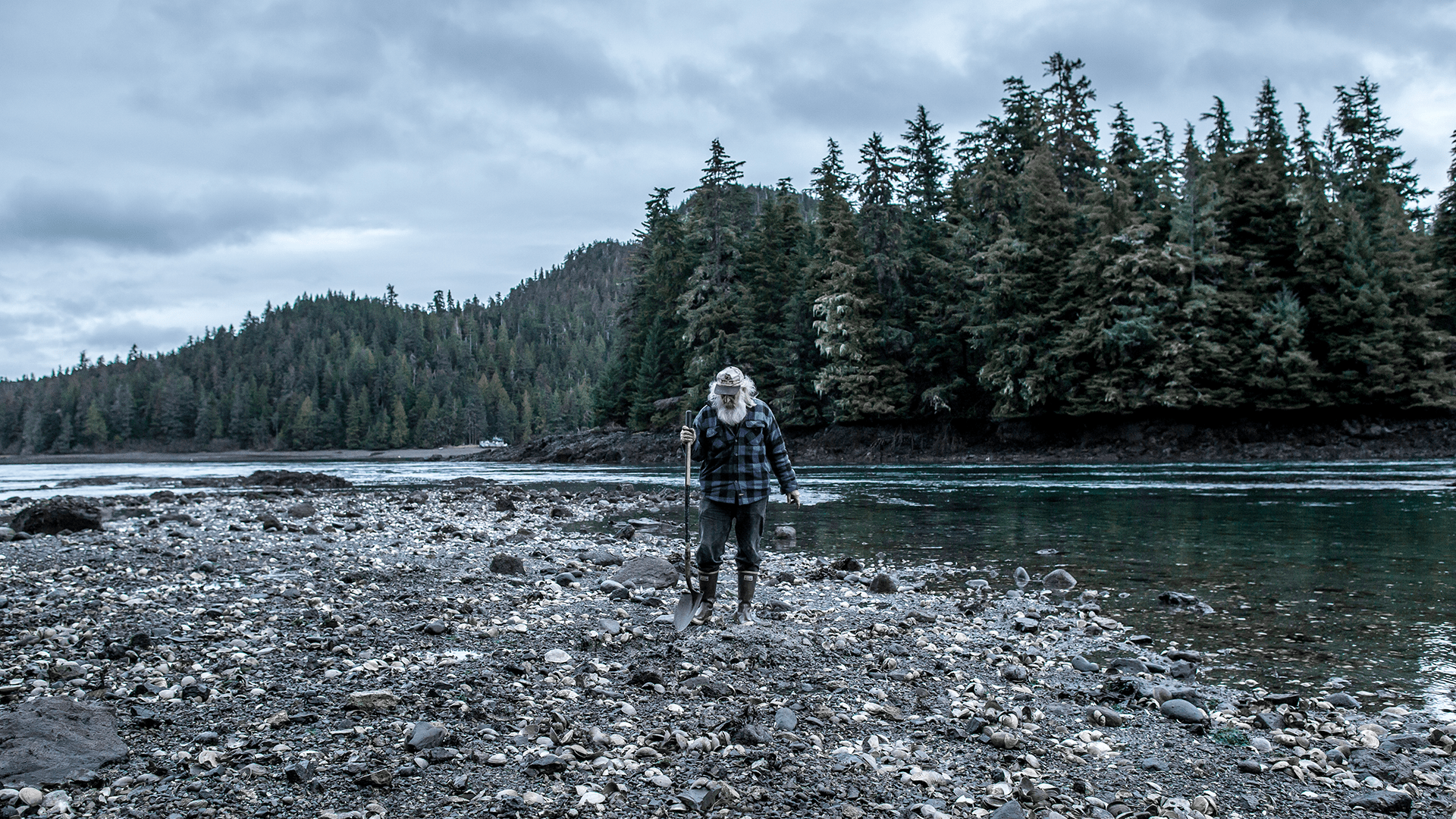Have you ever stopped to think about places that seem to exist outside the usual hustle and bustle, places where life moves at a rhythm all its own? Port Protection, Alaska, is very much one of those spots, a small community tucked away on Prince of Wales Island, where the wild Pacific Ocean meets a dense, green forest. It’s a place that, for many, brings up a lot of questions about how people make a living in such a remote setting, and what life is really like when you’re truly off the beaten path. So, we often find ourselves wondering about the folks who call it home, and perhaps what changes they’ve seen over the years.
For those of us who live in big towns or even just places with easy access to shops and services, the idea of a life sustained by the land and sea, far from modern conveniences, can seem quite something. People who make their lives in places like Port Protection have to be incredibly resourceful, you know, relying on their skills to hunt, fish, and gather what they need to get by. It’s a way of living that connects folks very deeply to their surroundings, almost like a dance with nature, where every day brings its own set of challenges and, too, its own quiet rewards. This kind of existence, really, teaches you a lot about self-reliance and community spirit, which is probably why it holds such a draw for many.
Over time, even the most isolated communities feel the gentle pull of the outside world, or perhaps the changing currents of the economy and the environment. It makes you curious, doesn't it, about how a place like Port Protection manages to hold onto its unique character while also, in some respects, adapting to what’s new. We hear stories, and we get a sense of the challenges faced by those who choose to live in such a distinct part of the world. It’s a story, really, about resilience and the enduring spirit of people who choose a life of independence, even when things might shift around them.
- Loves Journey Series
- Blonde Comedians Female
- Whats Blippis Real Name
- Pics Of Jessica Caban
- Quote About Nostalgia
Table of Contents
- What Does it Mean to Live in Port Protection Alaska?
- The Daily Pace of Life and What Happened to Port Protection Alaska
- How Does the Environment Shape What Happened to Port Protection Alaska?
- Are There Still People Living in Port Protection Alaska?
- The Challenges of Remote Living and What Happened to Port Protection Alaska
- Community Spirit and What Happened to Port Protection Alaska
- What Happened to Port Protection Alaska's Resources?
- What's the Future for Port Protection Alaska?
What Does it Mean to Live in Port Protection Alaska?
Living in a spot like Port Protection, you might imagine, is very different from city life. It means waking up to the sounds of the wilderness, maybe the cry of an eagle or the gentle lapping of waves against the shore. You’re pretty much surrounded by towering trees and vast stretches of water, which is that, your main source of both sustenance and, honestly, a bit of isolation. Folks there often spend their days fishing for salmon, halibut, or crab, or perhaps heading into the forest to hunt for deer or other game. It’s a life that asks a lot of you, physically, but it also offers a deep sense of connection to the natural world, a feeling that’s hard to find just anywhere else. Every meal, every bit of warmth, it seems, comes from your own hard work and the bounty of the land and sea around you, which is a powerful way to exist.
The pace of things is, well, just a little slower there, too. You don't have traffic jams or crowded sidewalks. Instead, your schedule is often dictated by the tides, the weather, and the seasons. If the fishing is good, you might be out on the water from dawn until dusk. If a storm rolls in, you're hunkering down, perhaps fixing things around the cabin or preparing for the next stretch of calm. It’s a rhythm that has been followed for generations, you know, a sort of timeless way of being that many people find quite appealing. This kind of living really helps you understand the immediate world around you in a way that, say, a desk job just doesn't. You learn to read the signs of nature, to prepare, and to adapt, which are pretty vital skills in such a setting.
The Daily Pace of Life and What Happened to Port Protection Alaska
The everyday rhythm in a place like Port Protection is, in many ways, tied to the natural world, very much so. People wake with the sun, or perhaps before it, if there’s a good tide for crabbing. Days are often spent out on the water, working fishing lines, or deep in the woods, looking for game or timber. There’s a constant focus on gathering what’s needed, whether that’s food for the table, wood for the stove, or materials for repairs. It’s a cycle that repeats, season after season, and that, is what shapes much of life there. This constant interaction with the environment means that what happens in the natural world directly influences what happens in the community, so any changes to the fishing grounds or the forest can really make a difference to daily living in Port Protection, Alaska.
Evenings might involve mending nets, sharpening tools, or simply sharing a meal with family and close neighbors. There aren't many outside distractions, so people often rely on each other for companionship and help. This creates a strong sense of community, where everyone sort of looks out for everyone else. It’s a life where skills like carpentry, boat repair, and hunting are not just hobbies, but absolutely necessary abilities for survival. This dedication to practical skills and mutual support, you know, is a big part of what makes the community tick, and it’s a characteristic that has, in some respects, been key to understanding what happened to Port Protection, Alaska, over the years.
How Does the Environment Shape What Happened to Port Protection Alaska?
The environment, you could say, is the main character in the story of Port Protection. The vast ocean, full of sea life, and the dense, ancient forests provide both the challenges and the opportunities for those who live there. The weather, which can change in a heartbeat, dictates when people can go out on the water or when they need to stay safe indoors. It’s a constant reminder that nature is in charge, and people must respect its power. This close relationship with the natural world means that any shifts in the environment, like changes in fish populations or alterations to the forest, can have a really big effect on what happened to Port Protection, Alaska, and its people.
For instance, if the fish aren't as plentiful as they once were, or if new rules come into play about how much can be caught, it directly impacts how families make a living. Similarly, if the timber industry shifts, or if there are fewer opportunities for logging, that also changes things for the folks who rely on the forest. So, the land and the sea aren’t just scenery; they are, in fact, the very foundation of life there. Understanding these connections is pretty important when you’re trying to figure out what happened to Port Protection, Alaska, and how its residents have adapted to changes in their natural surroundings.
Are There Still People Living in Port Protection Alaska?
Yes, people certainly do still live in Port Protection, Alaska. While it might not be a bustling metropolis, and the population numbers are, you know, quite small, the community persists. It's a testament to the enduring spirit of those who choose a life connected to the land and sea, far from the more populated areas. The individuals and families who remain there have a deep love for the lifestyle, the quiet, and the freedom that comes with such a remote existence. They are often folks who have grown up with this way of life, or those who have deliberately sought it out for its unique qualities. It’s a choice, really, that speaks volumes about what they value most in their daily lives.
The community, while small, is also very tight-knit. Everyone knows everyone else, and there’s a strong sense of mutual support. If someone needs help with a boat repair, or perhaps with getting supplies in, neighbors are often the first to lend a hand. This reliance on each other is a fundamental part of how things work in a place where external services are limited. It's a kind of informal network of assistance that ensures everyone can manage the day-to-day challenges of living in such an isolated spot. This ongoing presence of people, and their ability to keep going, speaks volumes about the human spirit and what it takes to thrive in a place like Port Protection, Alaska.
The Challenges of Remote Living and What Happened to Port Protection Alaska
Living remotely, like in Port Protection, comes with a whole set of unique challenges, as a matter of fact. Getting basic supplies, for instance, isn’t as simple as driving to a store. Everything has to be brought in by boat or plane, which can be expensive and dependent on the weather. Medical care, too, is not readily available, meaning serious health issues often require a trip to a larger town, which can be a real ordeal. Power might come from generators, and internet access can be spotty at best, making connections to the outside world a bit more difficult. These are just some of the practical hurdles that residents face every single day, and they shape what happened to Port Protection, Alaska, in terms of its ongoing existence.
Beyond the practical side, there’s also the challenge of isolation itself. While many residents appreciate the quiet and solitude, it can also mean fewer social opportunities and a smaller pool of resources. Schools might be very small, or non-existent, for younger families. Job opportunities, outside of fishing, logging, or self-sufficiency, are quite limited. So, people really need to be adaptable and self-reliant to make a life there. These factors, you know, play a big part in who chooses to stay, and how the community itself evolves, which helps us understand what happened to Port Protection, Alaska, and its population over time.
Community Spirit and What Happened to Port Protection Alaska
Despite the challenges, the spirit of community in Port Protection is, well, remarkably strong. When you live in a place where everyone relies on each other, bonds tend to form that are deeper than just casual acquaintance. Neighbors aren’t just neighbors; they’re often like extended family. If a boat breaks down, or someone needs a hand with a big project, the whole community tends to pitch in. This kind of shared experience, and the necessity of working together, really fosters a sense of collective identity. It’s a clear example of how people come together when they face similar circumstances, which is quite inspiring.
This strong sense of togetherness is, in fact, a crucial element in understanding what happened to Port Protection, Alaska, and why it continues to endure. It’s not just about the individual struggle for survival; it’s about a collective effort to maintain a way of life that is meaningful to them. Celebrations, shared meals, and even just simple conversations on the dock are important moments that reinforce these connections. It’s this human element, the way people support each other through thick and thin, that truly defines the character of the place and helps it keep going, even when things are tough.
What Happened to Port Protection Alaska's Resources?
The resources that Port Protection relies on, primarily its fish and timber, have seen their own share of shifts over the years, as a matter of fact. Fishing, which has always been a mainstay, is subject to changing regulations, fish populations that go up and down, and market prices that can fluctuate wildly. What was once a guaranteed catch might become less predictable, and that, can certainly impact how people make their living. Similarly, the timber industry, which once provided a lot of work, has also gone through its own changes, with different rules and economic pressures affecting how much logging can happen and how many jobs it supports. So, the very foundations of the local economy have, in some respects, been in flux.
These shifts in resources mean that residents often have to adapt. They might look for new ways to make money, perhaps by offering guided tours, or by processing their own fish for direct sale, or by finding other crafts to sell. It’s a constant process of figuring out how to keep things going when the traditional ways become a little less certain. This ongoing adaptation to the availability of natural resources is a big part of the story of what happened to Port Protection, Alaska, and how its people have responded to these changing economic tides. They learn to be incredibly resourceful, finding new avenues to sustain their unique way of life.
What's the Future for Port Protection Alaska?
Looking ahead for a place like Port Protection, it's pretty clear that its future will likely involve a continued balance between tradition and adaptation. The core values of self-reliance and community spirit will probably remain strong, as they are so deeply ingrained in the way of life there. However, residents will also need to keep finding new ways to sustain themselves, especially as the world outside continues to change. This might mean embracing new technologies where it makes sense, or finding innovative ways to use their natural resources, or even attracting new people who are drawn to the unique charm of remote living. It’s a dynamic process, you know, that keeps things interesting.
The allure of Port Protection, its quiet beauty and the independent spirit of its people, will likely continue to draw interest, too. Whether it’s from people looking for a simpler life, or those who just want to experience a truly wild corner of the world, this interest could bring new opportunities. Ultimately, the future of Port Protection, Alaska, will depend on the resilience of its residents and their ongoing ability to adjust to the currents of change, while still holding onto the things that make their home so special. It’s a story that continues to unfold, one day at a time, in that truly remarkable part of the world.
Related Resources:



Detail Author:
- Name : Mossie Wintheiser
- Username : dbauch
- Email : aglae.kuhic@schaden.net
- Birthdate : 1994-08-27
- Address : 7136 Torphy Street Suite 110 East Wilburn, ID 44298-1057
- Phone : +14584916752
- Company : Wehner, Denesik and Emard
- Job : Hairdresser OR Cosmetologist
- Bio : Aut rerum dolorem officia ut voluptatum perspiciatis. In aperiam doloremque voluptates cupiditate. Nihil vel corporis qui sapiente voluptate cupiditate. Impedit ut voluptas ad laboriosam dolores.
Socials
tiktok:
- url : https://tiktok.com/@kathryn_haag
- username : kathryn_haag
- bio : Dolores aut dolor aut eaque eligendi. Voluptas modi molestias voluptatum enim.
- followers : 2872
- following : 2929
instagram:
- url : https://instagram.com/kathryn7356
- username : kathryn7356
- bio : Iste earum corporis facilis sint. Nobis amet aut et magnam dolorem nesciunt.
- followers : 3398
- following : 852
twitter:
- url : https://twitter.com/haagk
- username : haagk
- bio : Qui aliquam consequatur rerum facilis. Consequatur molestias quia earum laborum. Dolorum quo iste facere ducimus. Quis qui quisquam qui et.
- followers : 6129
- following : 777
facebook:
- url : https://facebook.com/khaag
- username : khaag
- bio : Praesentium voluptas sunt necessitatibus quas iusto.
- followers : 3150
- following : 2218
linkedin:
- url : https://linkedin.com/in/kathrynhaag
- username : kathrynhaag
- bio : Impedit inventore repellat dolor.
- followers : 3971
- following : 2579